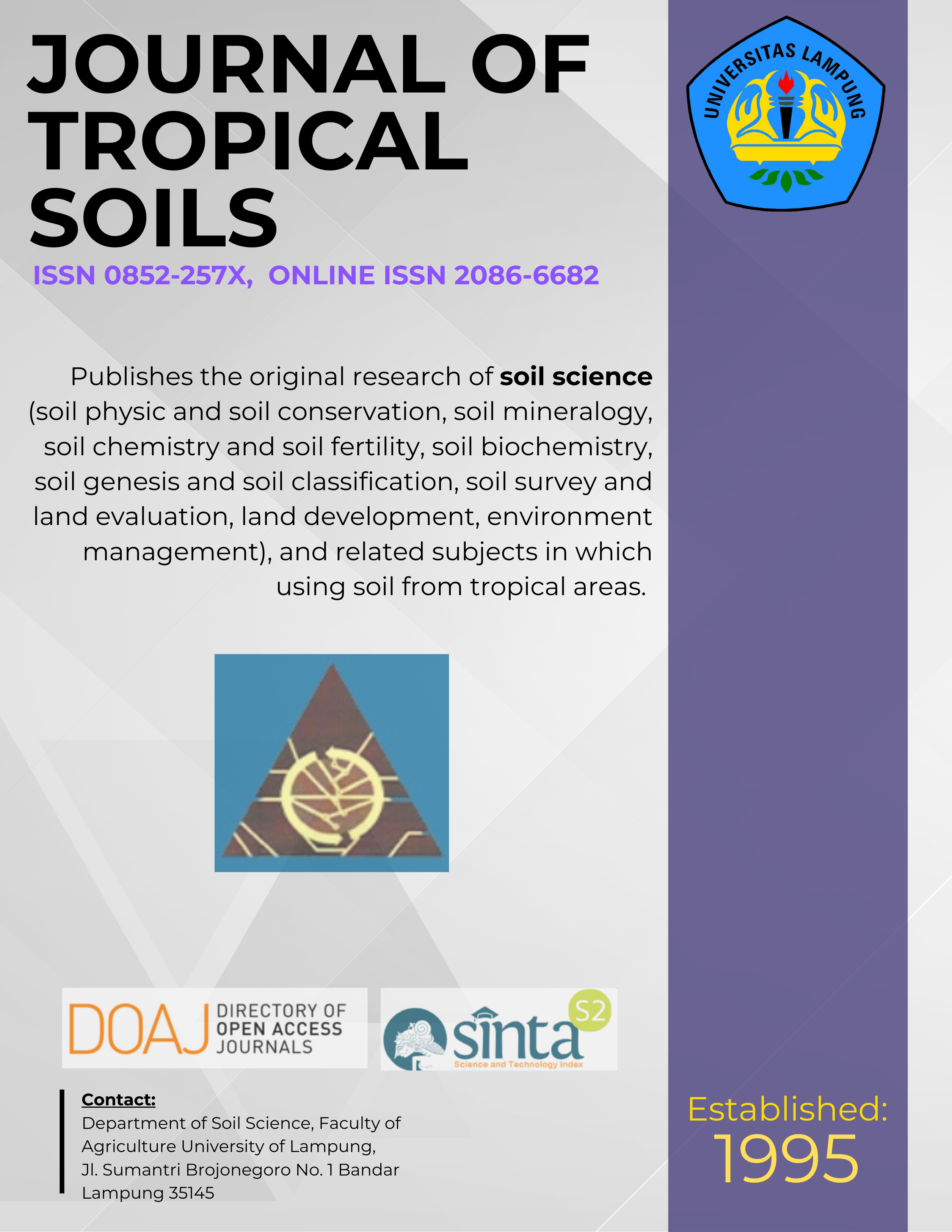Effectiveness of Organonitrofos Plus Fertilizer on Sweet Corn and Soil Chemical Properties of Ultisols
Main Article Content
Abstract
This study aimed to examine Organonitrofos Plus fertilizer (OP) on sweet corn (Zea mays Saccharata L.) and its effect on changes in soil chemical properties of Ultisols. Organonitrofos Plus fertilizer is an enhancement of Organonitrofos fertilizer enriched with microbes at the beginning of the manufacturing process. Research was conducted in the greenhouse of Integrated Agricultural Laboratory of Lampung University. Treatment applied was a factorial of 4 × 2 × 3 with three replications in a randomized block design. The first factor was the dose of OP fertilizer (0, 10, 20, 30 Mg ha-1), the second factor was the dose of inorganic fertilizers (without inorganic fertilizers, and with inorganic fertilizers, namely Urea 0.44, 0.28 SP-36 and KCl 0.16 Mg ha-1), and the third factor was the dose of biochar (0, 10, 20 Mg ha-1). By a single OP fertilizers, inorganic fertilizers, and the interaction between the OP and the inorganic fertilizers increased the weight of dry stover, cob length, cob diameter, cob with husk and cob without husk of corn. OP fertilizers which are applied in Ultisols can improve soil fertility and increase corn production so that OP fertilizer can lessen the use of inorganic fertilizer and can be used as a substitute for inorganic fertilizer. RAE values were highest in treatment of O4K2B2 (30 Mg OP ha-1, with inorganic fertilizer, 10 Mg biochar ha-1) that was equal to 181%, followed by O2K2B3 (10 Mg OP ha-1, with inorganic fertilizer, 20 Mg biochar ha-1 ) with the difference in RAE value of 0.5%.
[How to Cite: Dermiyati, SD Utomo, KF Hidayat, J Lumbanraja, S Triyono, H Ismono, NE Ratna, NT Putri dan R Taisa. 2016. Pengujian Pupuk Organonitrofos Plus pada Jagung Manis (Zea mays Saccharata. L) dan Perubahan Sifat Kimia Tanah Ultisols. J Trop Soils 21: 9-17 Doi: 10. 10.5400/jts.2016.21.1.9]
Downloads
Article Details
Section
License for Authors
Authors who publish with this journal agree to the following terms:
- Authors retain copyright and grant the journal right of first publication with the work simultaneously licensed under a Creative Commons Attribution License that allows others to share the work with an acknowledgement of the work's authorship and initial publication in this journal.
- Authors are able to enter into separate, additional contractual arrangements for the non-exclusive distribution of the journal's published version of the work (e.g., post it to an institutional repository or publish it in a book), with an acknowledgement of its initial publication in this journal.
- Authors are permitted and encouraged to post their work online (e.g., in institutional repositories or on their website) prior to and during the submission process, as it can lead to productive exchanges, as well as earlier and greater citation of published work (See The Effect of Open Access).
License for Regular Users
Other regular users who want to cite, distribute, remix, tweak, and build upon author’s works, even for commercial purposes, should acknowledge the work’s authorship and initial publication in this journal, licensed under a Creative Commons Attribution License.

